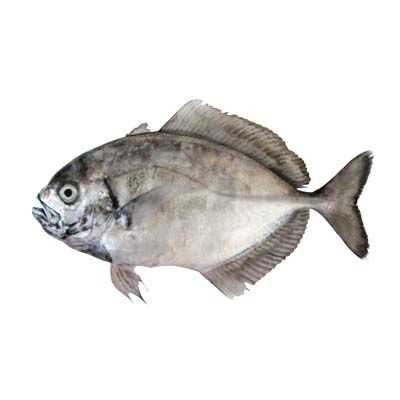Cottonmouth Jack

Species Details
Uraspis Secunda
Carangidae
Perciformes
Marine, Reefs, Inshore
1 - 5 lbs.
14" - 20"
Cottonmouth Jack (Uraspis secunda) Fish Description
The cottonmouth jack is distinct because it features a white mouth and tongue that looks like it has been bleached. Adults are a dark hue of bluish-black, while juveniles are lighter with six to seven brown bands along their sides that run perpendicular across their lateral line.
Their elongated bodies are slightly compressed, with a curved snout and a mouth that stretches until under the front part of their eye. The dorsal fin has nine spines and 27-32 soft rays. The anal fin has three spines with 19-23 soft rays and may appear absent. Their pectoral fins are curved and larger than the head, with caudal fins that are pronouncedly forked.
They may be confused with the Whitemouth Trevally (Uraspis uraspis) and the Whitemouthed Jack (Uraspis helvola), but they are distinguished by a scaleless area on their underside near the breast that reaches until midway to the base of the pectoral fin. The bend in the lateral line is also shorter than the straight part with about 48-66 scales and is arched towards the anterior.
Diet & Size
The cottonmouth jack’s primary diet consists of zooplankton, small reef-associated fish, and squid. The cottonmouth jack’s average length is 14-15 inches, weighing in the range of 3-4 pounds. The longest known cottonmouth jack recorded measured 19 inches. The International Game Fish Association's all-tackle world record is at 5 lbs caught in Bermuda in 2014.
Interesting facts about the Cottonmouth Jack
- The cottonmouth jack was first described in 1860 in ''Historia Natural de la Isla de Cuba'' by Felipe Poey, a Cuban zoologist.
- Cottonmouth jack contains high protein, moderate fat content, and a low omega-6/omega-3 ratio.
- They are often found as by-catch in commercial nets when fishing for yellowfin tuna or pacific blue tuna
- Juvenile cottonmouth jacks have been known to dwell around areas where jellyfish are plentiful
- This fish will spend its entire life in saltwater
Fishing Techniques
The cottonmouth jack is only of minor commercial importance and is not considered a prize game fish, but makes good sport for anglers.
A relatively small fish, the cottonmouth jack is found inshore in mid-depth waters. When fishing for reef-associated fish out on a boat, it’s always recommended to have a local guide who is familiar with the area. Knowing the local weather is vital, as the direction and speed of wind and currents help maintain your boat over the reefs to fish successfully. Saltwater fish are also known for moving often, so having an experienced captain is best.
Anglers will want to use braided lines since they have a higher tolerance for chafing against the rough edges of the reef. This type of line is also smaller compared to other lines of the same weight category, allowing you to have a long line in your reel. Generally, a 20lb test with a 6 to 7-foot medium-action rod will serve your needs, and having several rods rigged up is recommended, just in case your lines get frayed.
Lures are most often used, including jigs, spoons, and squids, although live bait and strip baits of squid are also effective.
Habitat and Distribution
The cottonmouth jack is widely distributed and found in all tropical and subtropical oceans worldwide. They are pelagic but may occasionally be found near the bottom, usually near small islands to feed. They may be solitary but are often seen gathering in small schools with other individuals, and can be common prey for the blue marlin.
This oceanodromous marine fish dwells at a depth range of 3-118 feet, but they are usually found inshore between 5-50 feet. The cottonmouth jack is reef-associated, and migrate alternately within oceans that are spawning locations and feeding zones.
The cottonmouth jack can be found in good numbers in the Western Indian Ocean in Tanzania to the Central Pacific in California and Costa Rica. They have been reported as far out as Hawaii as well. This widespread species has been seen in the waters of the Western Atlantic (Massachusetts, USA, and the northern Gulf of Mexico to Brazil) and the Eastern Atlantic (Mauritania to Angola). Documented reports also originate in Algoa Bay, South Africa, and New South Wales in Western Australia.







